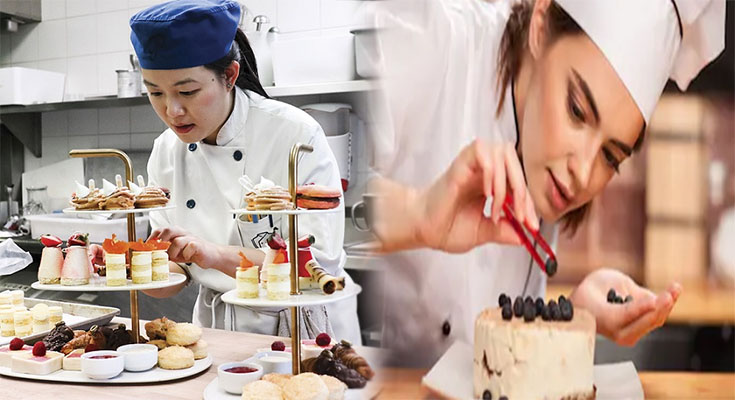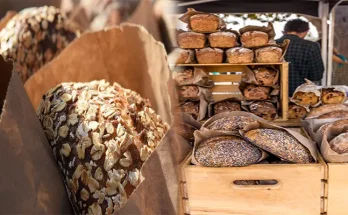In the culinary world, there are various positions that contribute to creating an exceptional dining experience. Two such roles are that of a pastry chef and a sommelier. While both professions are associated with the culinary arts, they have distinct sets of responsibilities. Let’s take a closer look at the roles and responsibilities of a pastry chef and a sommelier.
Pastry Chef
Role: A pastry chef specializes in creating delicious and visually appealing desserts and baked goods. They employ a combination of culinary skills and artistic creativity to craft sweet treats that are not only tasty but also visually stunning.
Responsibilities:
- Menu Planning: Pastry chefs collaborate with the chef and other members of the culinary team to develop dessert menus that complement the overall theme and style of the restaurant.
- Recipe Development: Pastry chefs are responsible for developing unique recipes for a variety of desserts, taking into account factors such as flavor profiles, dietary restrictions, and seasonal ingredients.
- Baking and Cooking: Pastry chefs prepare and bake desserts and baked goods, ensuring that each item is cooked to perfection. They pay close attention to details such as texture, temperature, and presentation to create visually appealing and delectable desserts.
- Ingredient Selection: Pastry chefs carefully select high-quality ingredients for their creations, paying attention to freshness, flavor, and sustainability.
- Decorating and Presentation: Pastry chefs possess artistic skills that allow them to beautifully decorate and present their desserts. They use various techniques such as piping, glazing, and molding to enhance the visual appeal of their creations.
- Kitchen Management: Pastry chefs oversee the pastry section of the kitchen, ensuring that all tasks are completed efficiently and on time. They manage inventory, supervise assistants, and maintain a clean and organized work area.
Sommelier
Role: A sommelier is a wine expert who specializes in pairing wines with food, recommending wines to customers, and managing the wine program of a restaurant. They play a crucial role in enhancing the dining experience by offering wine options that complement the flavors of the dishes being served.
Responsibilities:
- Wine Selection: Sommeliers curate an extensive wine list for the restaurant, taking into consideration a variety of factors such as the cuisine, customer preferences, and budget.
- Food and Wine Pairing: Sommeliers possess a deep understanding of the flavors and complexities of wines and are skilled in pairing them with different types of cuisine. They make recommendations to customers based on their food choices, enhancing the overall dining experience.
- Staff Training: Sommeliers provide training to restaurant staff, including waitstaff and chefs, on wine knowledge and service techniques. They educate the team on wine regions, grape varieties, and proper wine service.
- Wine Service: Sommeliers ensure that wines are stored properly and are served at the correct temperature and in appropriate glassware. They are responsible for opening, decanting, and presenting wines to customers with the utmost professionalism.
- Wine Education: Sommeliers stay updated on new wines, trends, and emerging regions through continuous education. They attend wine tastings, visit vineyards, and pursue certifications to expand their knowledge.
- Customer Engagement: Sommeliers interact with customers, offering advice and recommendations while providing a memorable wine experience. They assist in selecting wines that align with individual preferences and budgets, making the dining experience more enjoyable.
While a pastry chef focuses on creating delectable desserts, a sommelier specializes in the art of wine selection and pairing. Both professions require unique skills, expertise, and a passion for their respective crafts. Together, they contribute to creating an extraordinary dining experience that tantalizes the taste buds and delights the senses.





